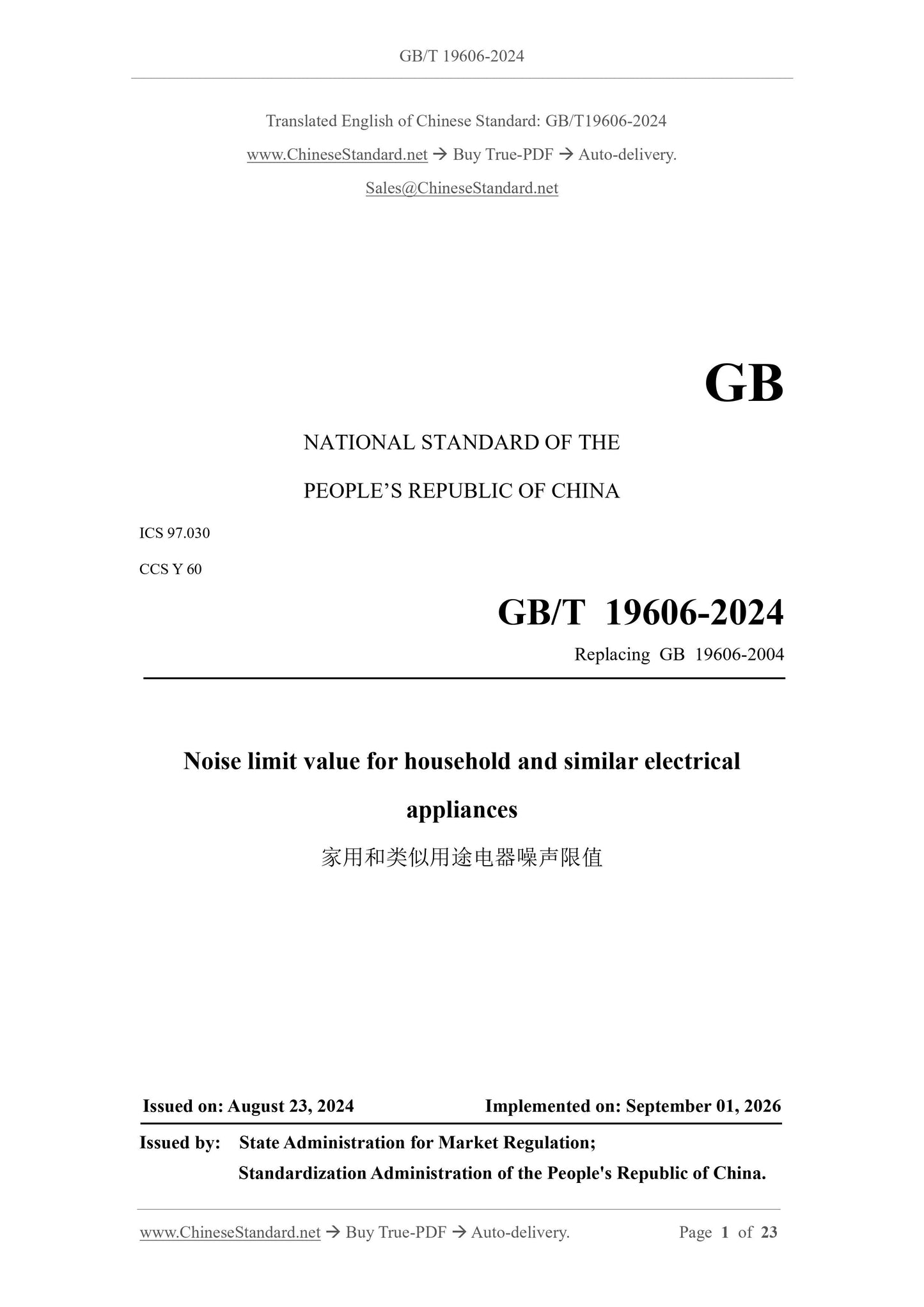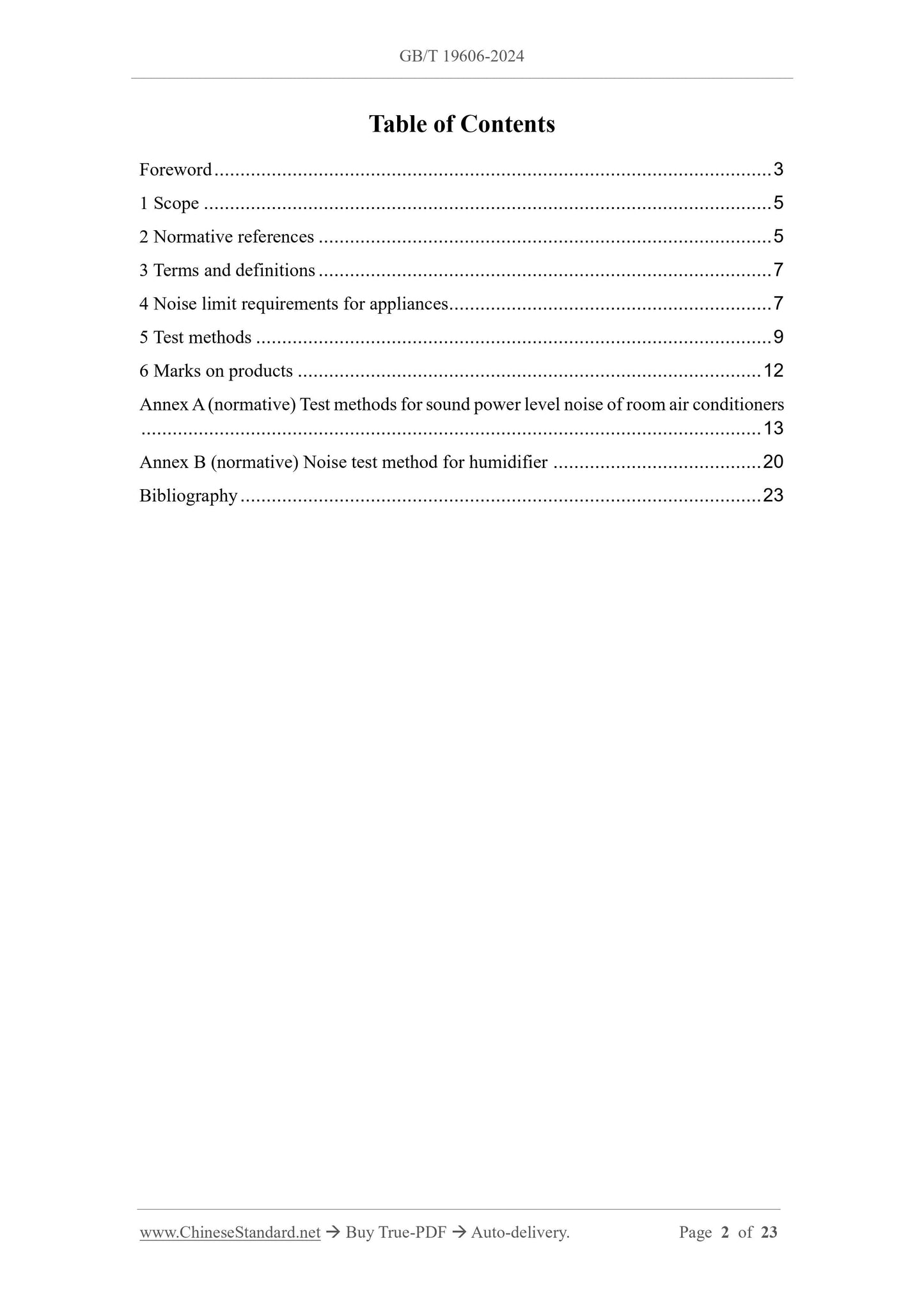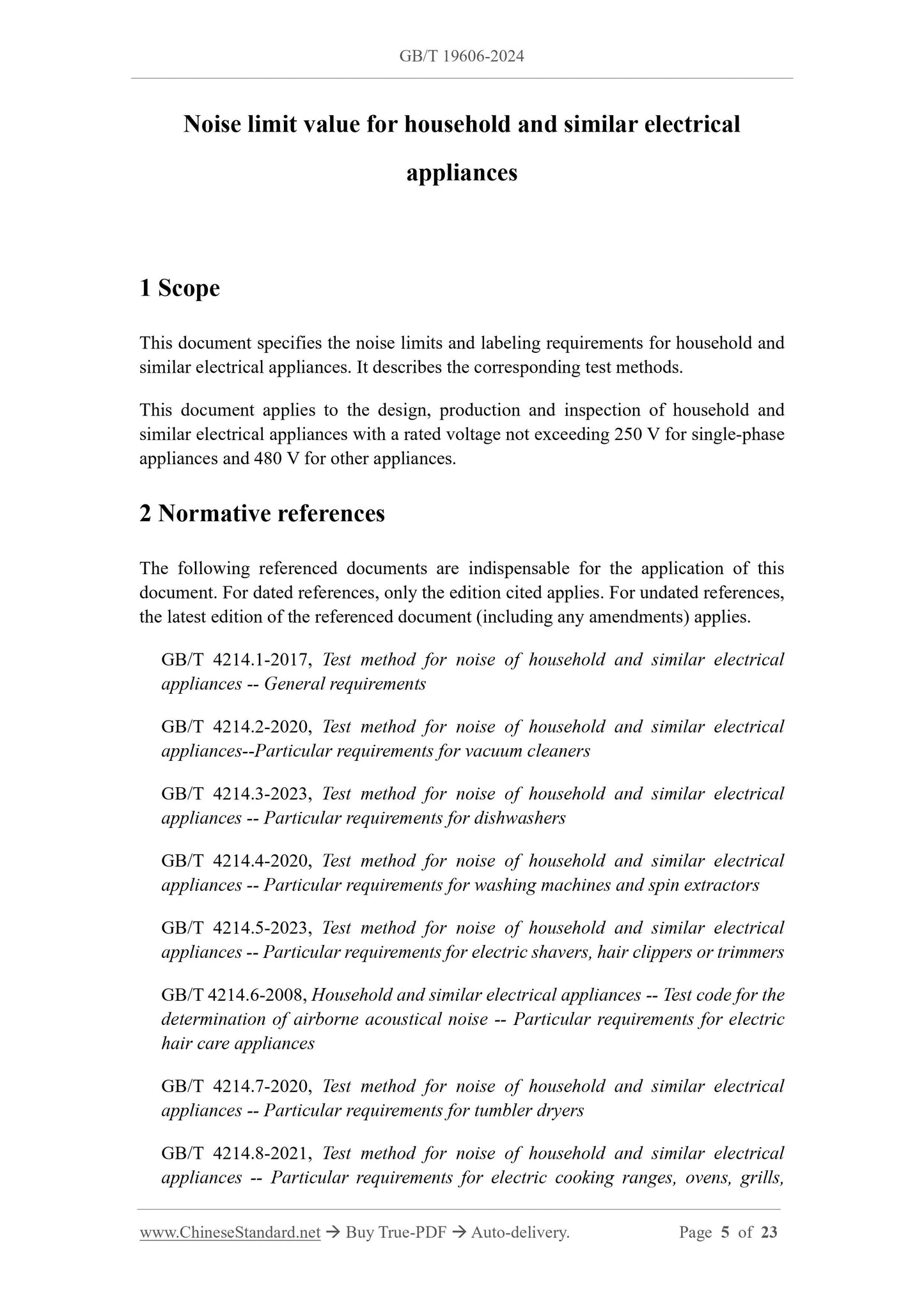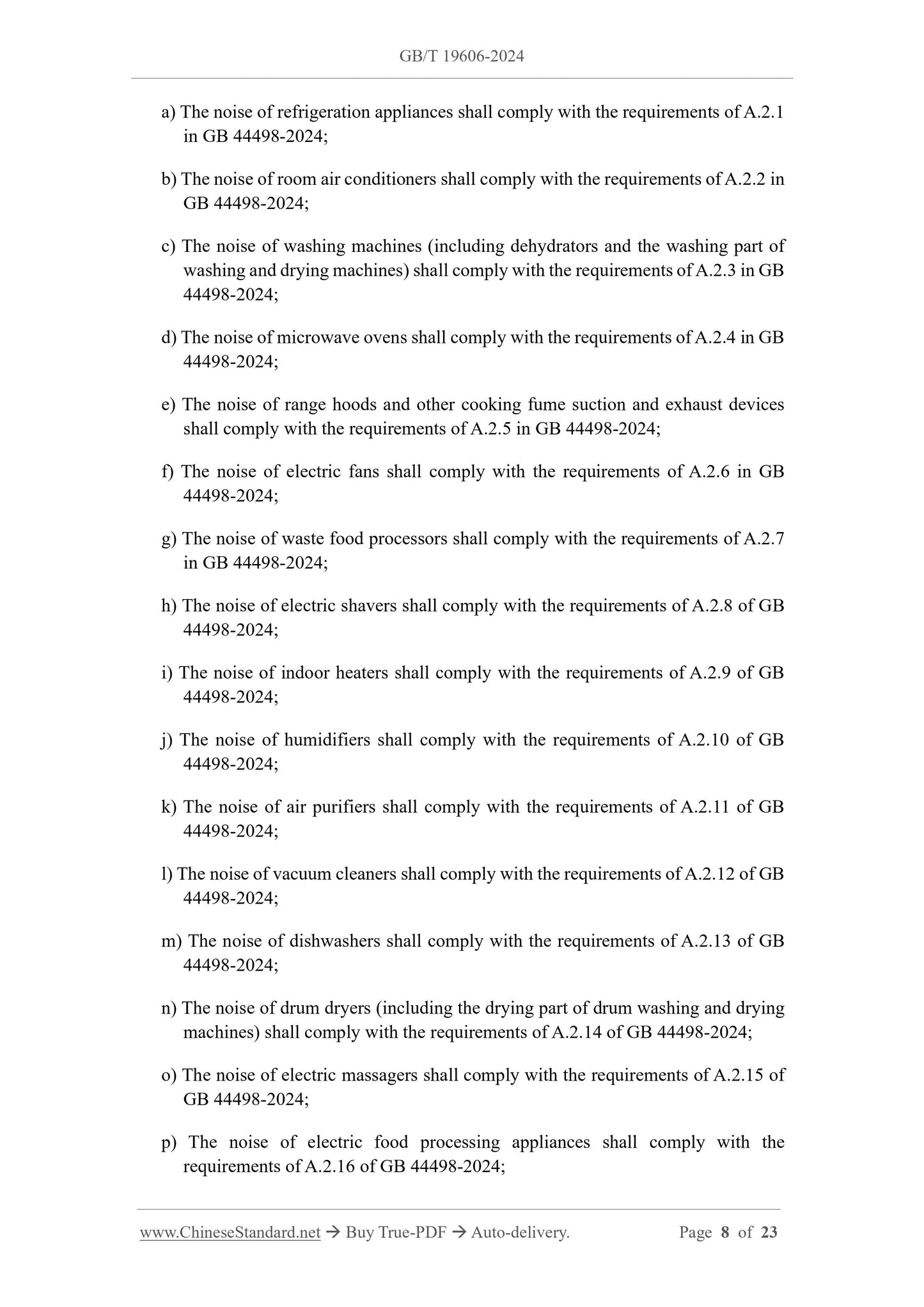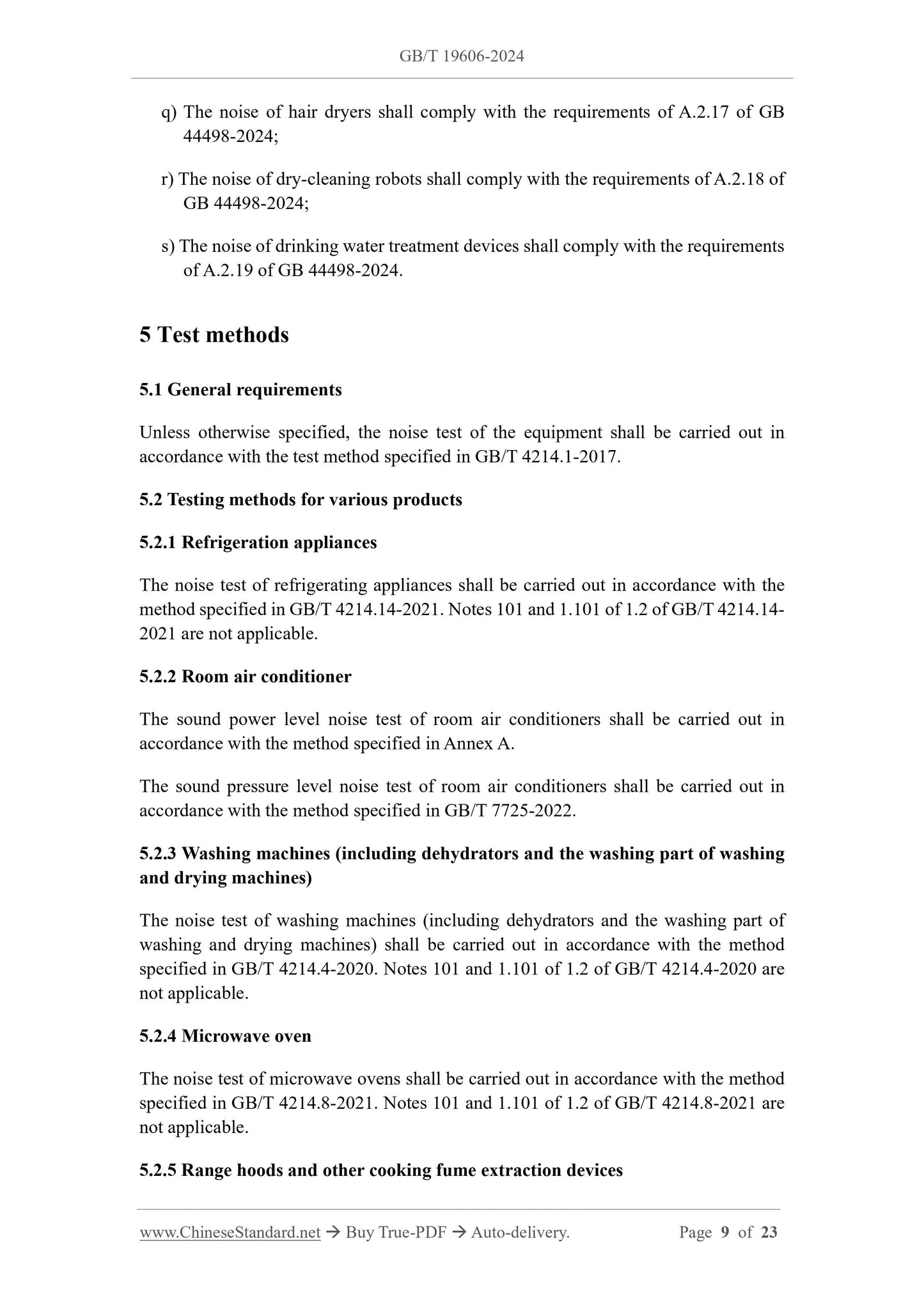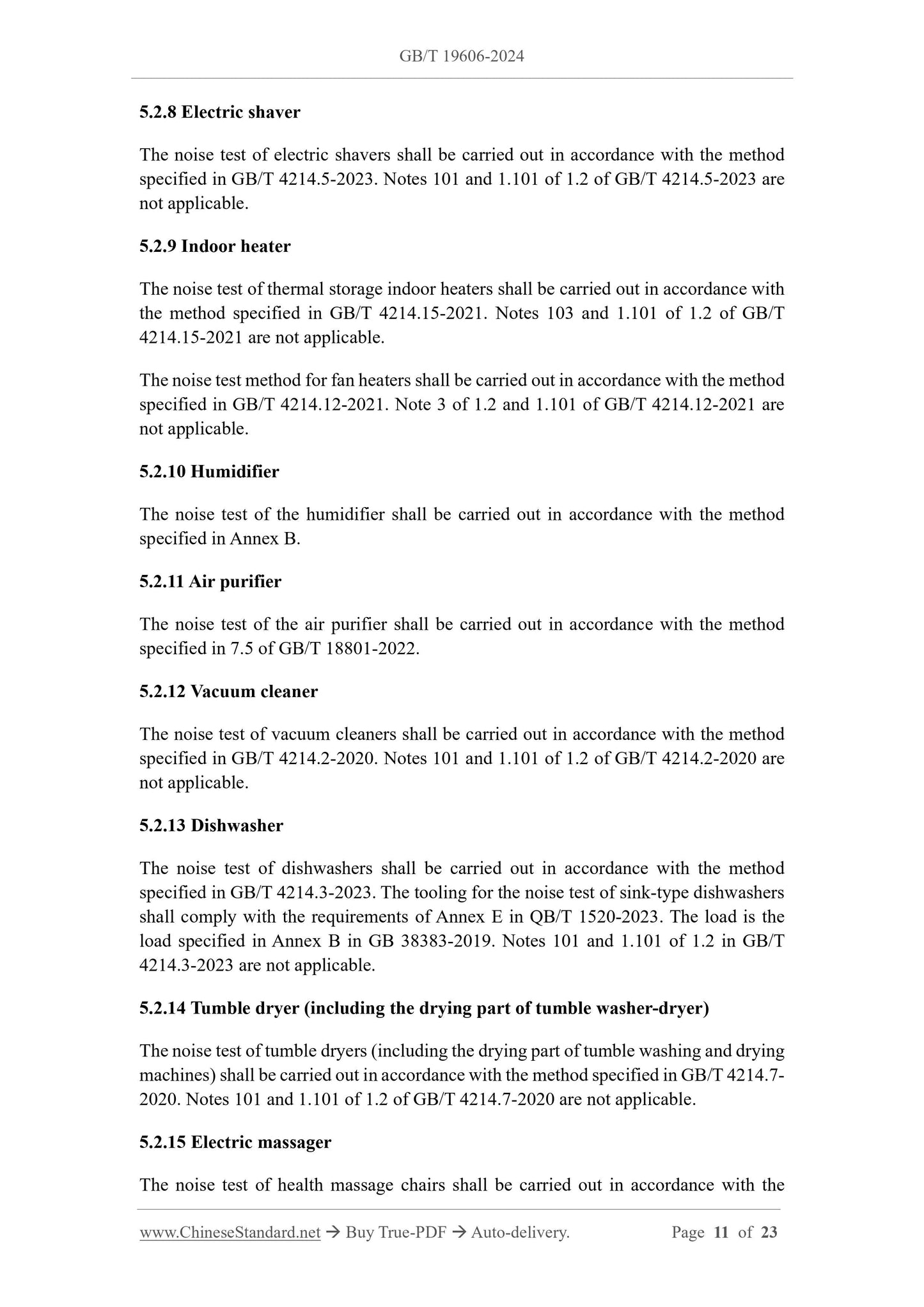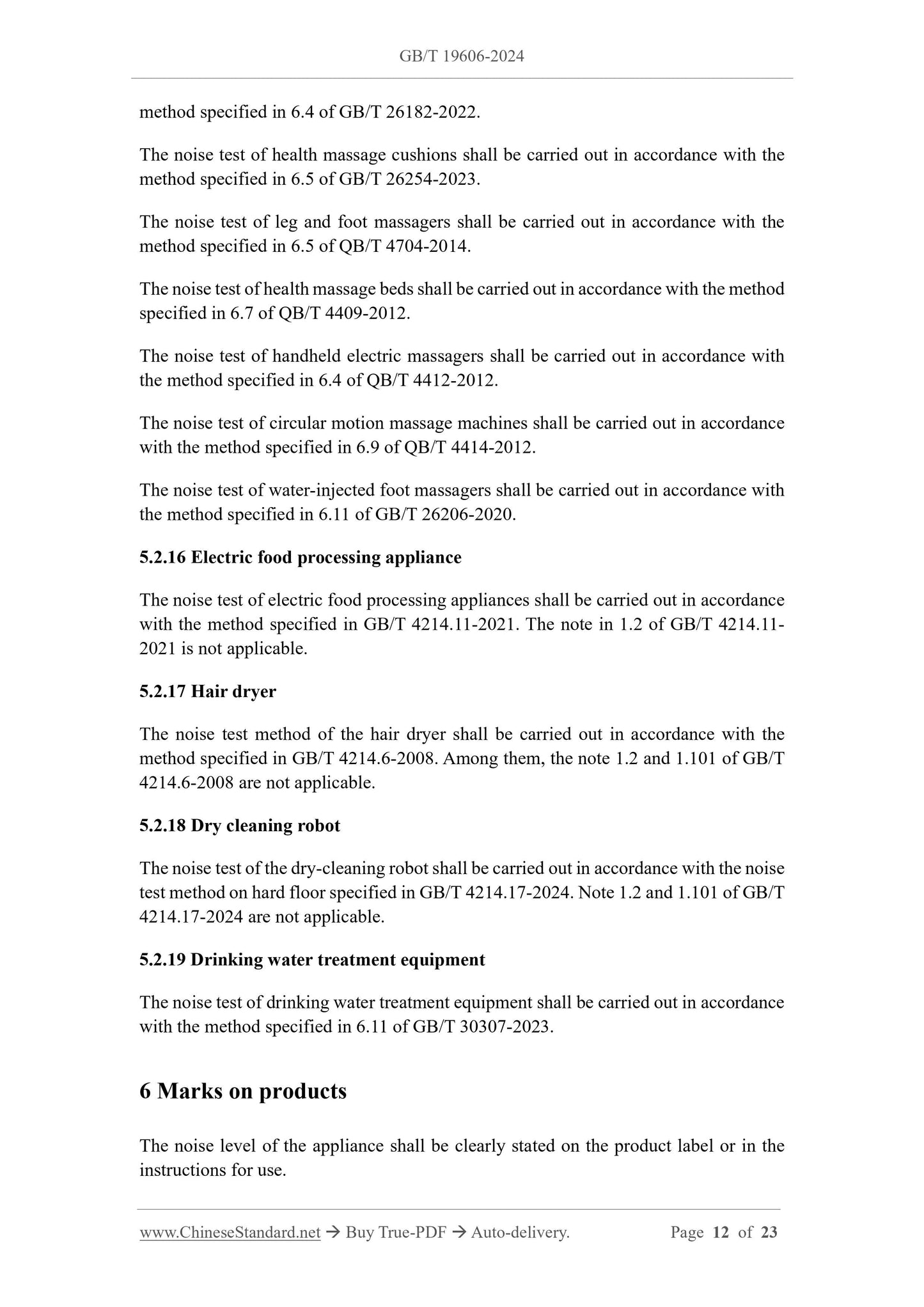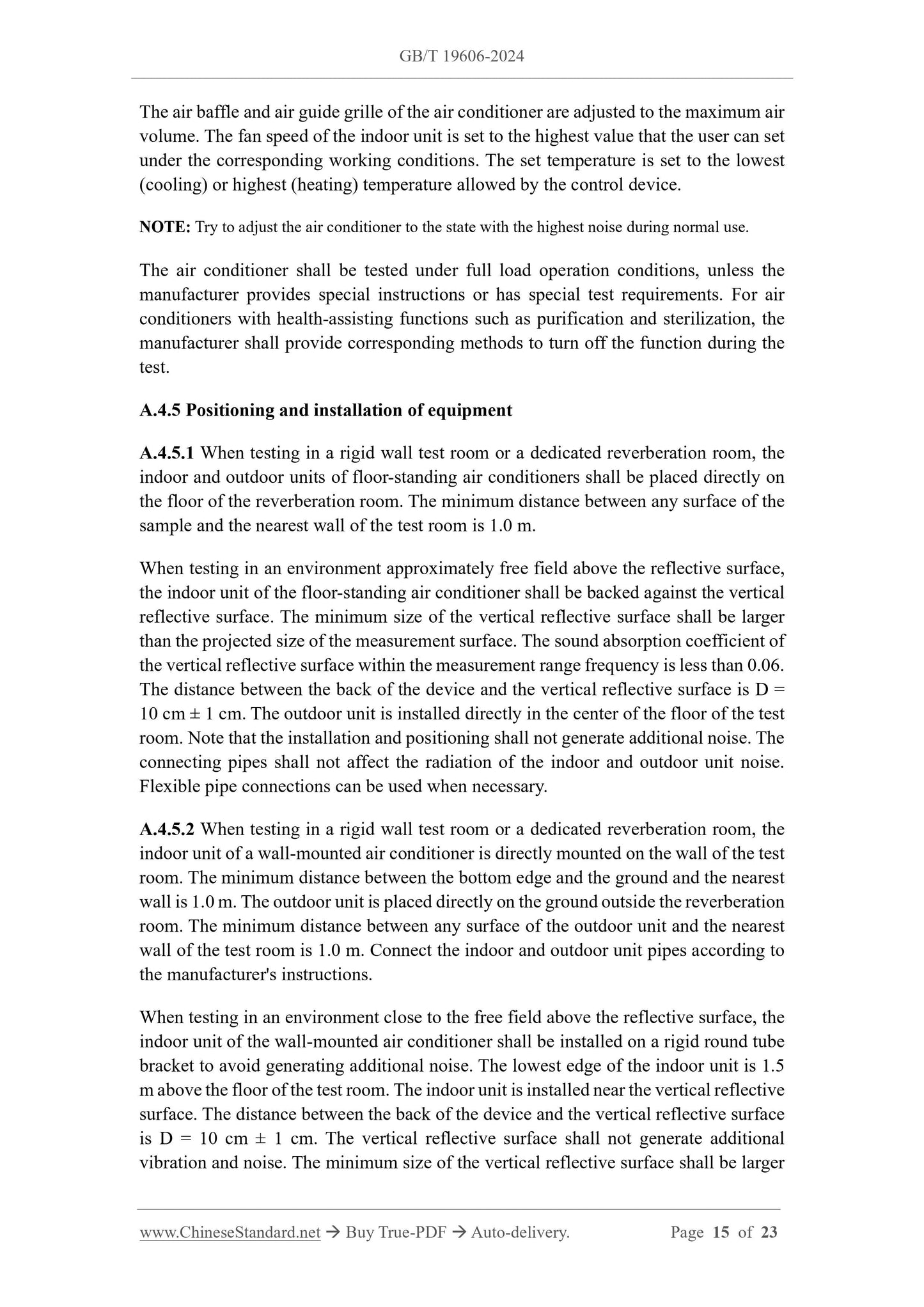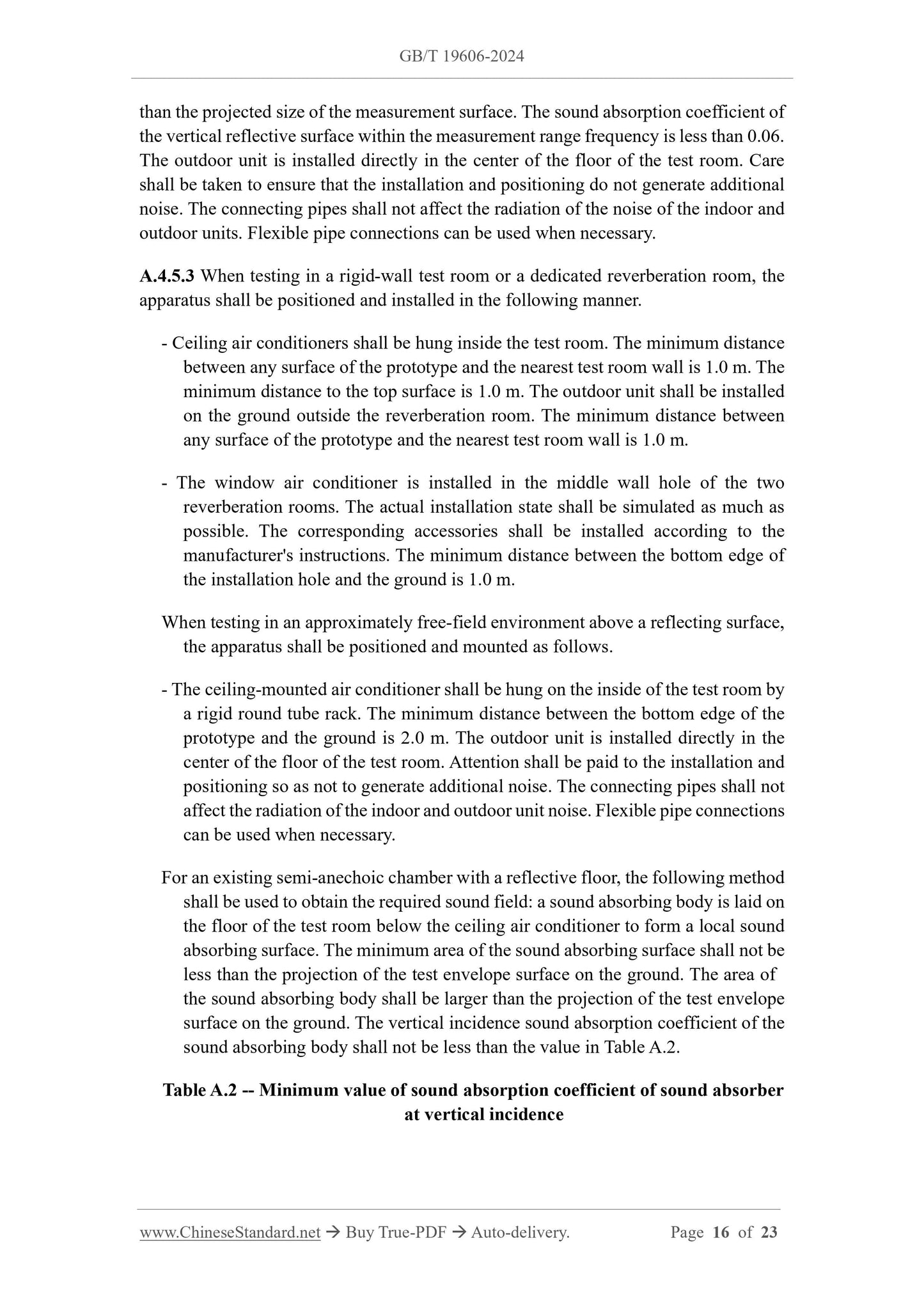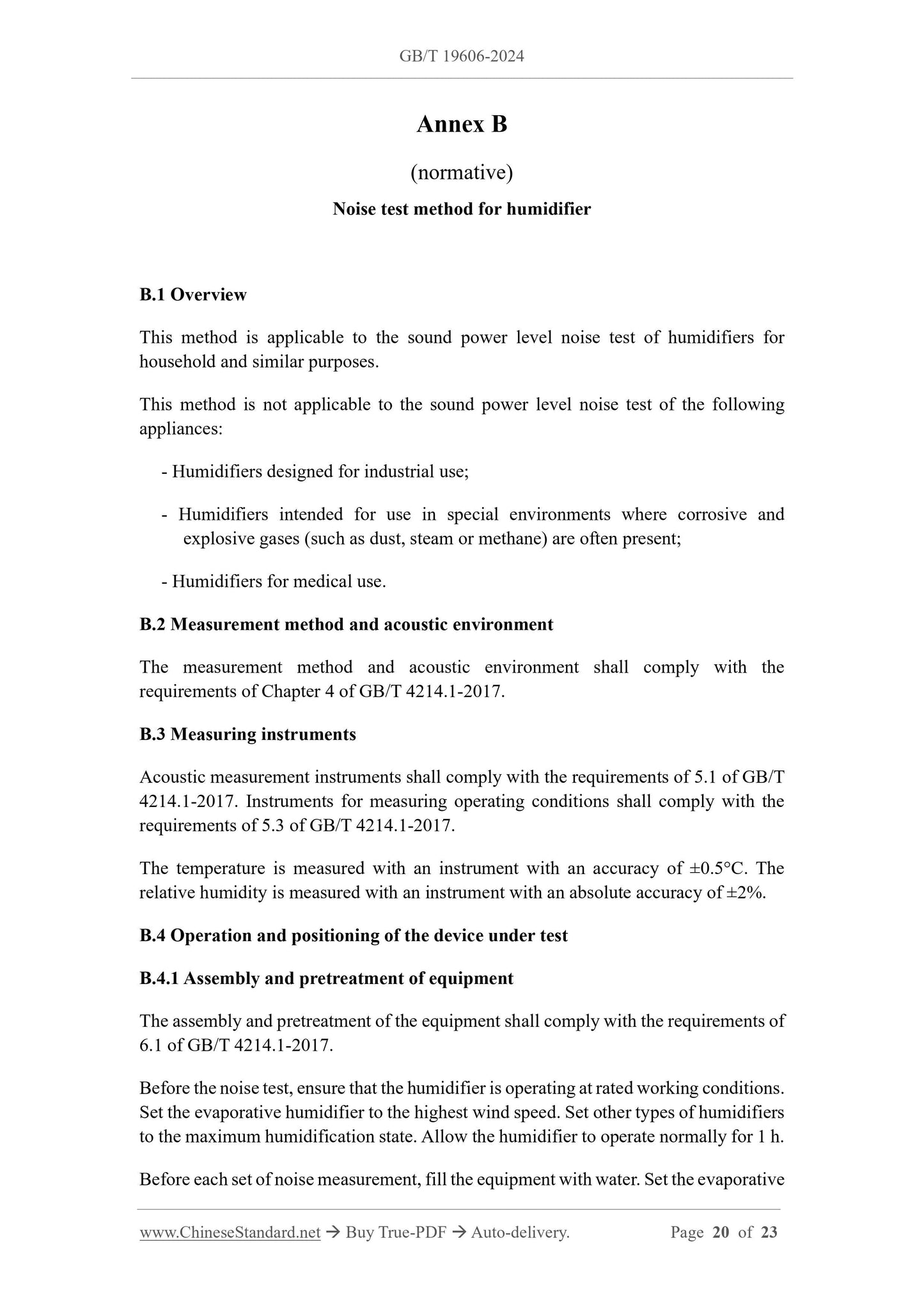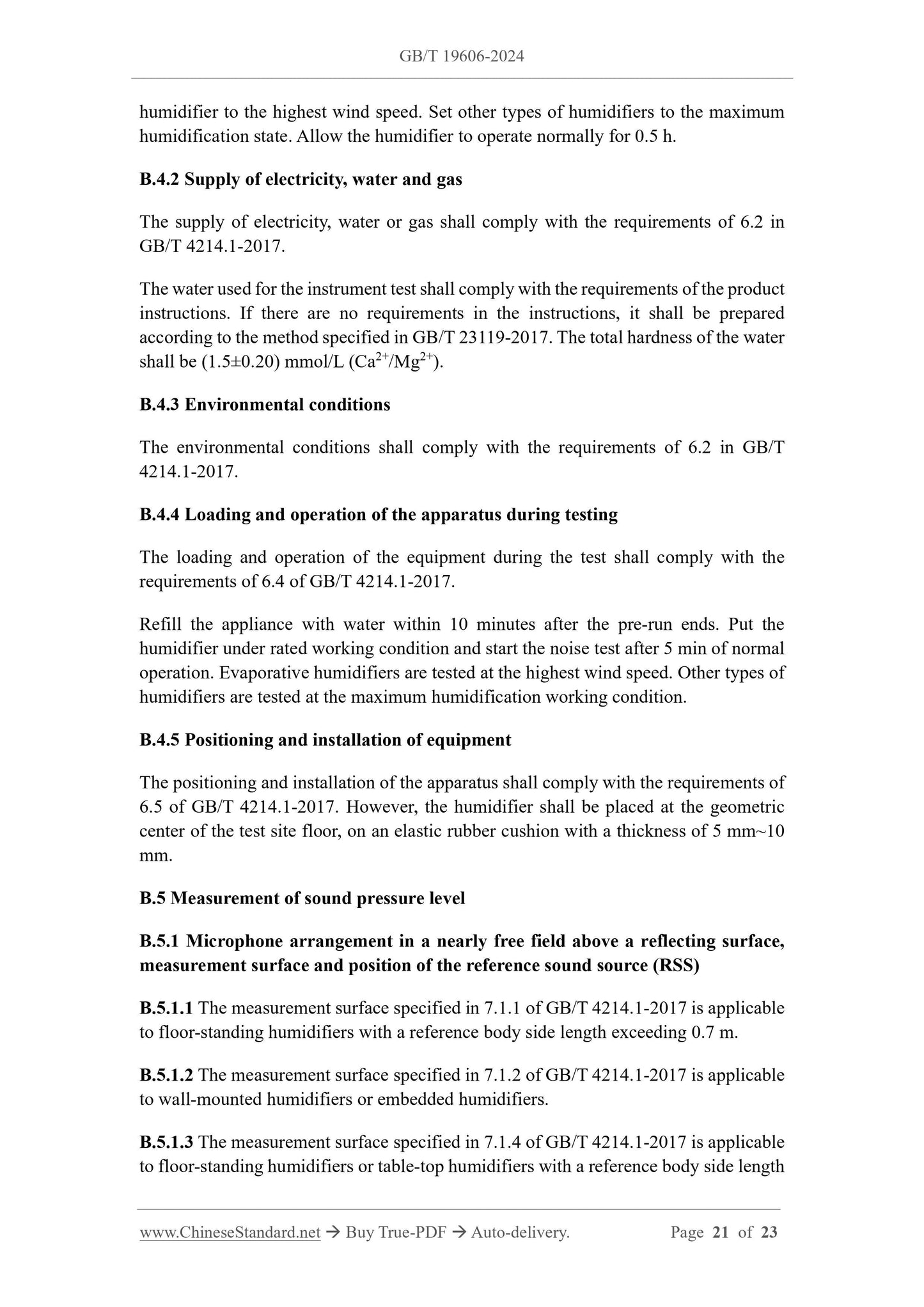1
/
of
11
www.ChineseStandard.us -- Field Test Asia Pte. Ltd.
GB/T 19606-2024 English PDF (GB/T19606-2024)
GB/T 19606-2024 English PDF (GB/T19606-2024)
Regular price
$305.00
Regular price
Sale price
$305.00
Unit price
/
per
Shipping calculated at checkout.
Couldn't load pickup availability
GB/T 19606-2024: Noise limit value for household and similar electrical appliances
Delivery: 9 seconds. Download (and Email) true-PDF + Invoice.Get Quotation: Click GB/T 19606-2024 (Self-service in 1-minute)
Newer / historical versions: GB/T 19606-2024
Preview True-PDF
Scope
This document specifies the noise limits and labeling requirements for household andsimilar electrical appliances. It describes the corresponding test methods.
This document applies to the design, production and inspection of household and
similar electrical appliances with a rated voltage not exceeding 250 V for single-phase
appliances and 480 V for other appliances.
Basic Data
| Standard ID | GB/T 19606-2024 (GB/T19606-2024) |
| Description (Translated English) | Noise limit value for household and similar electrical appliances |
| Sector / Industry | National Standard (Recommended) |
| Classification of Chinese Standard | Y60 |
| Classification of International Standard | 97.030 |
| Word Count Estimation | 20,231 |
| Date of Issue | 2024-08-23 |
| Date of Implementation | 2024-08-23 |
| Issuing agency(ies) | State Administration for Market Regulation, China National Standardization Administration |
Share
